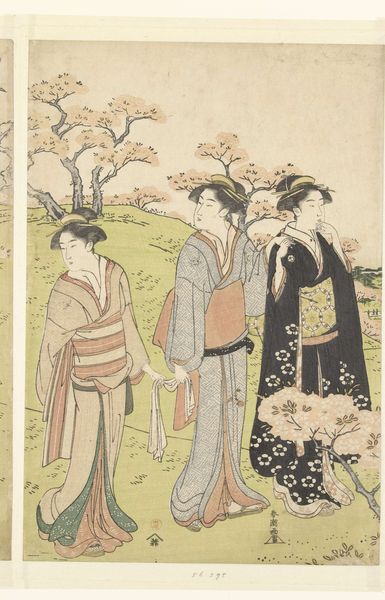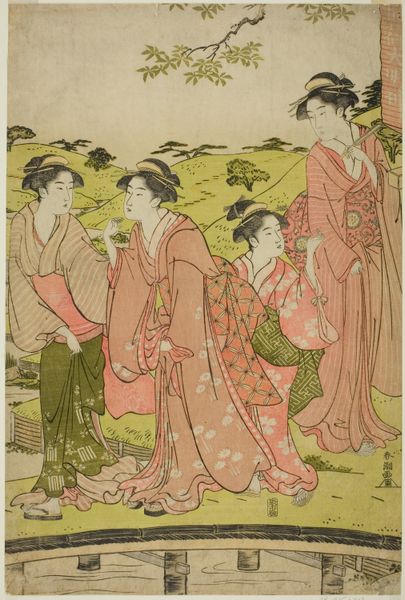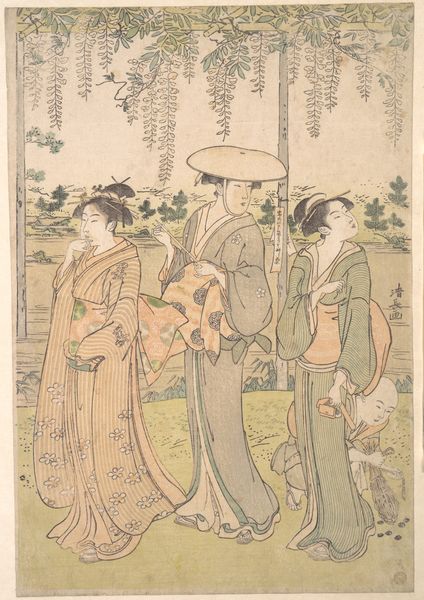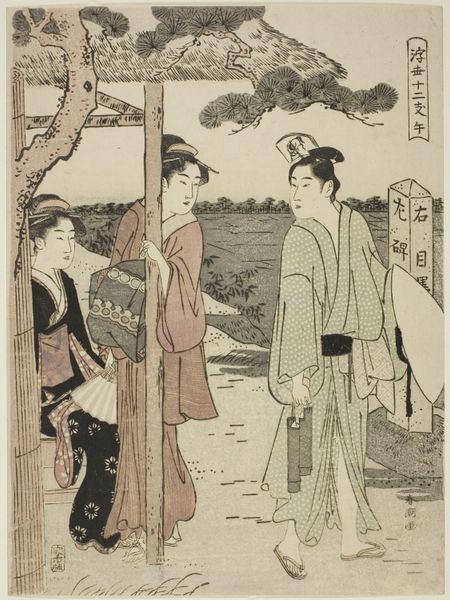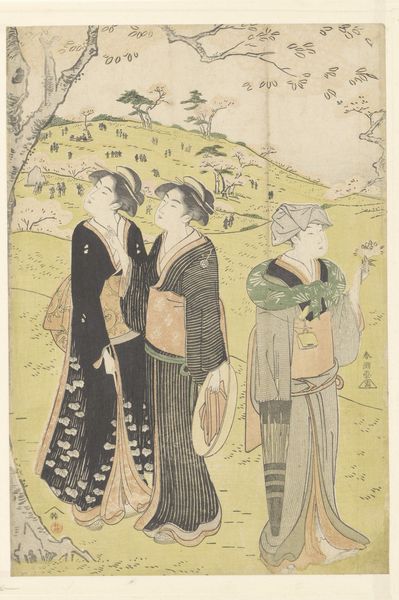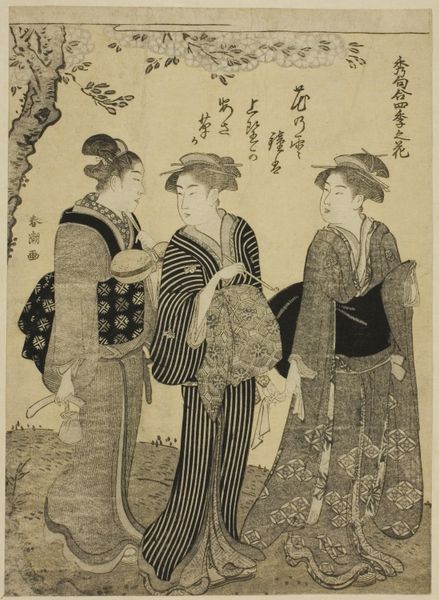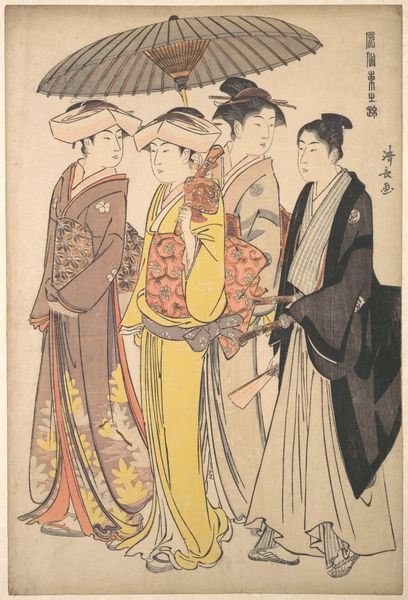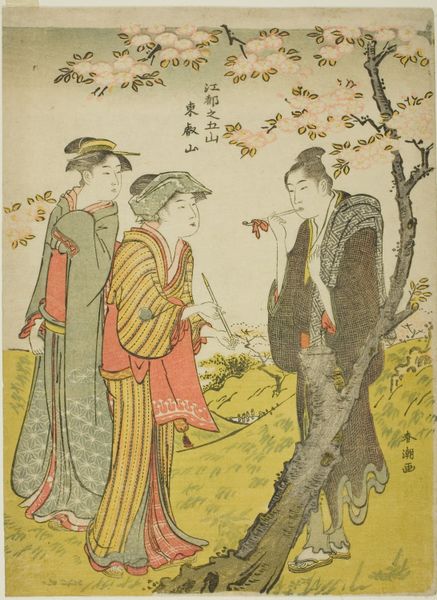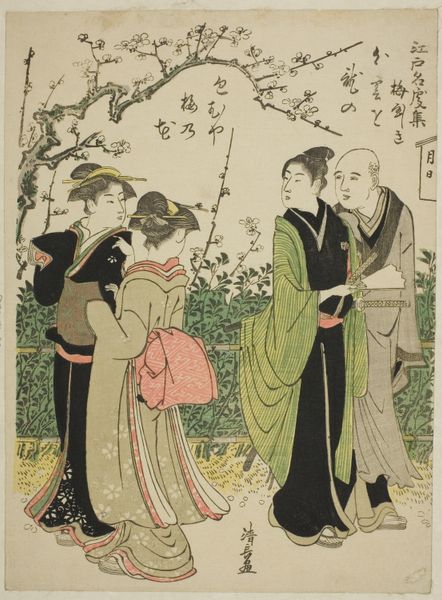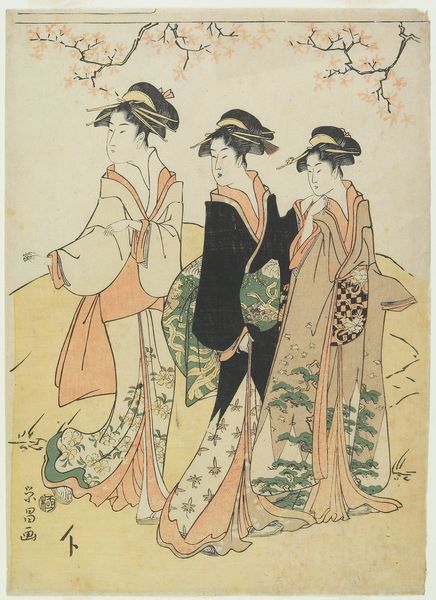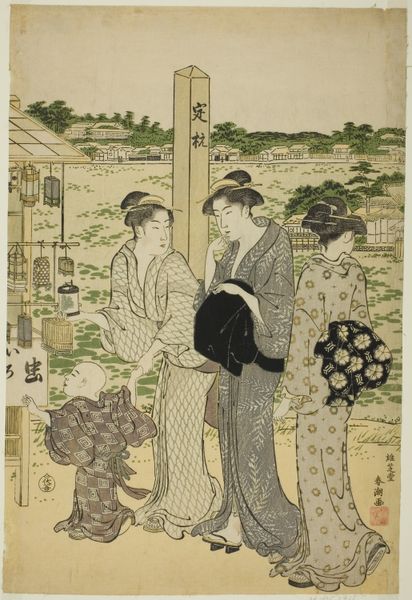
print, woodblock-print
#
portrait
# print
#
asian-art
#
landscape
#
ukiyo-e
#
woodblock-print
#
genre-painting
Dimensions: 37.1 × 24.9 cm (14 9/16 × 9 13/16
Copyright: Public Domain
Curator: Here we have "Women Visiting an Inari Shrine," a woodblock print by Katsukawa Shuncho, dating from around 1780 to 1801. The work is part of the Ukiyo-e tradition, focusing on scenes of everyday life. Editor: Oh, I just love the gossamer feel. You know, like a half-remembered dream, all soft edges and delicate colors. It gives me this strange mix of tranquility and wistful melancholy. Curator: The medium is central here: woodblock printing, a complex process involving carving a design into wood, applying ink, and then pressing it onto paper. Consider the labor involved, the artisans who transferred Shuncho’s vision. The production relies on division of labour: Shunsho, as artist; the block cutter; the printer, each contributing distinct skills. The quality of the paper too, plays an unsung part, providing the ground for such elegant articulation. Editor: Absolutely! It's incredible to think of the hands that touched this piece before it reached us. It makes me appreciate the inherent tactility of it, even behind the glass. I wonder about those women... Are they sisters? Friends? What secrets do they share as they visit the shrine? Curator: Ukiyo-e prints were mass-produced and marketed to a broad audience, offering glimpses into entertainment districts, landscapes, and popular culture, including fashionable beauties and shrines. Here, the composition depicts a scene of leisure and religious practice intertwined. We can think about who consumed these images and the cultural values they reflect. Note that prints like this challenged traditional hierarchies, bringing images of the elite within reach of the masses. Editor: I hadn’t really thought of that... the accessibility! It adds another layer to the image; that ordinary folks, like us, were welcome in this world too. Makes you wonder how it informed their dreams, you know? Created possibilities in the imagination…I love how art lets you do that. Curator: And of course, examining the pigments, their sourcing, and the process of their layering – it all connects this aesthetic experience to concrete historical and material conditions. It gives an awareness of production chains. Editor: What began as a fleeting, atmospheric experience leads to broader recognition of what created it: all those hands; even the paper! This takes the experience into whole other levels. Thank you, friend. Curator: The intersection of aesthetics, labour, and consumption; it truly does deepen the appreciation of a work like this.
Comments
No comments
Be the first to comment and join the conversation on the ultimate creative platform.
